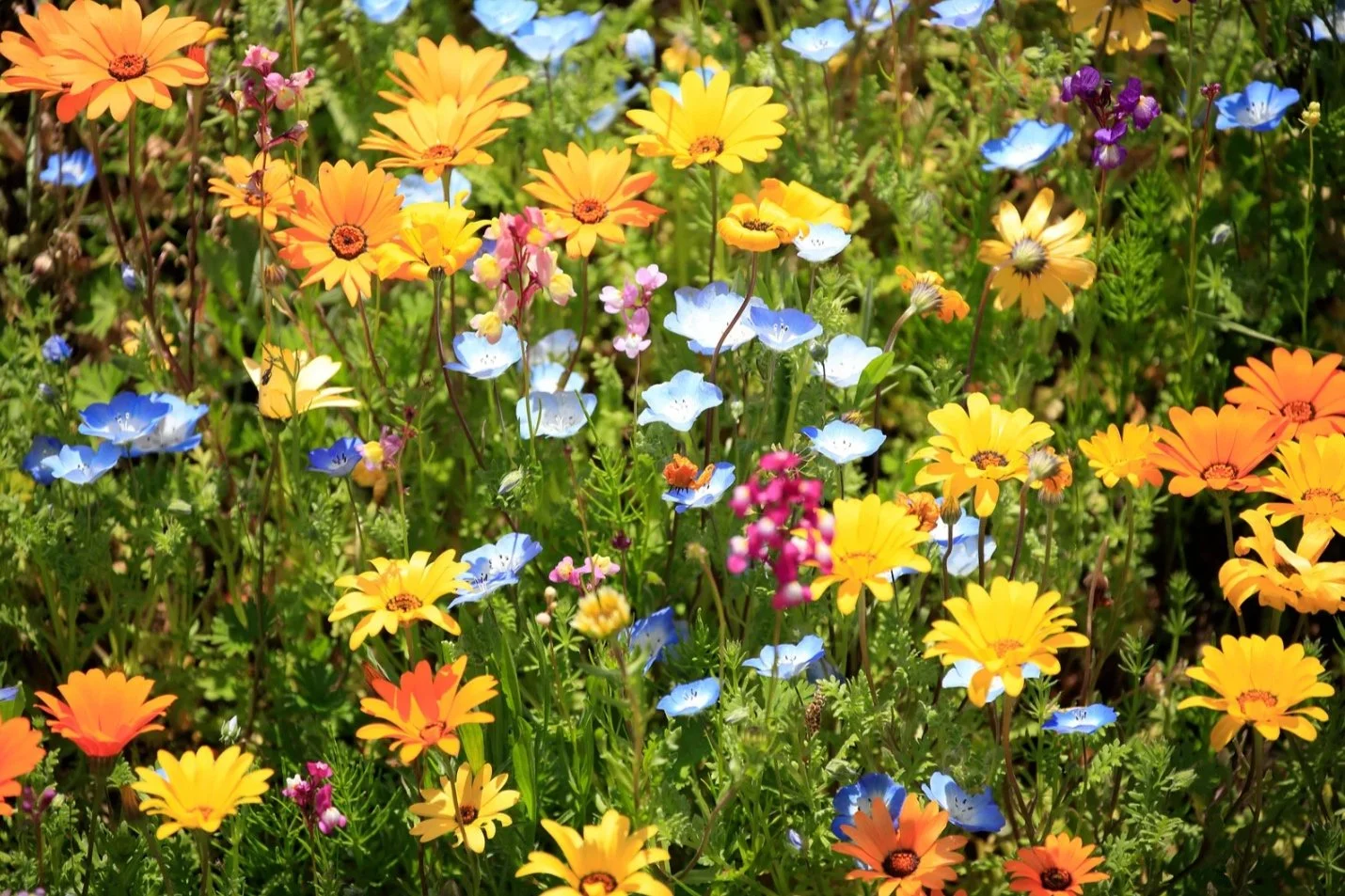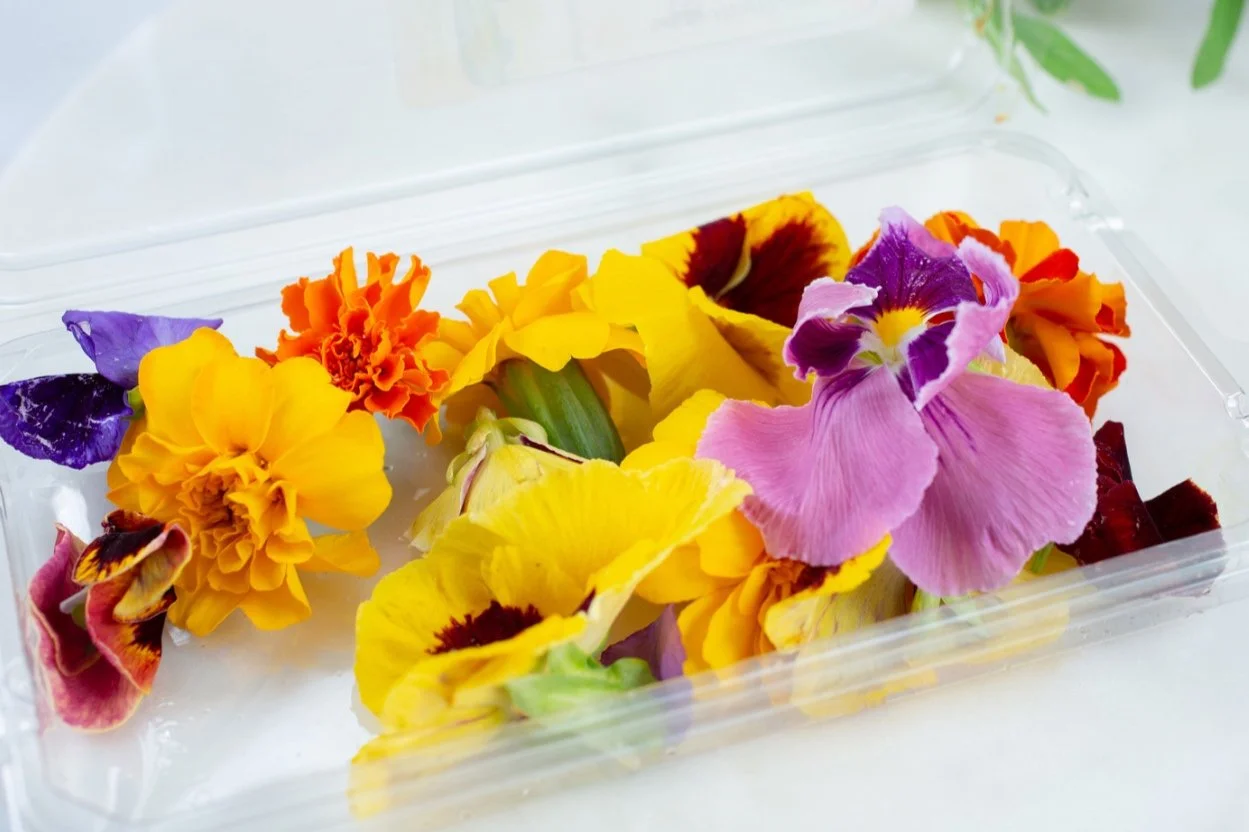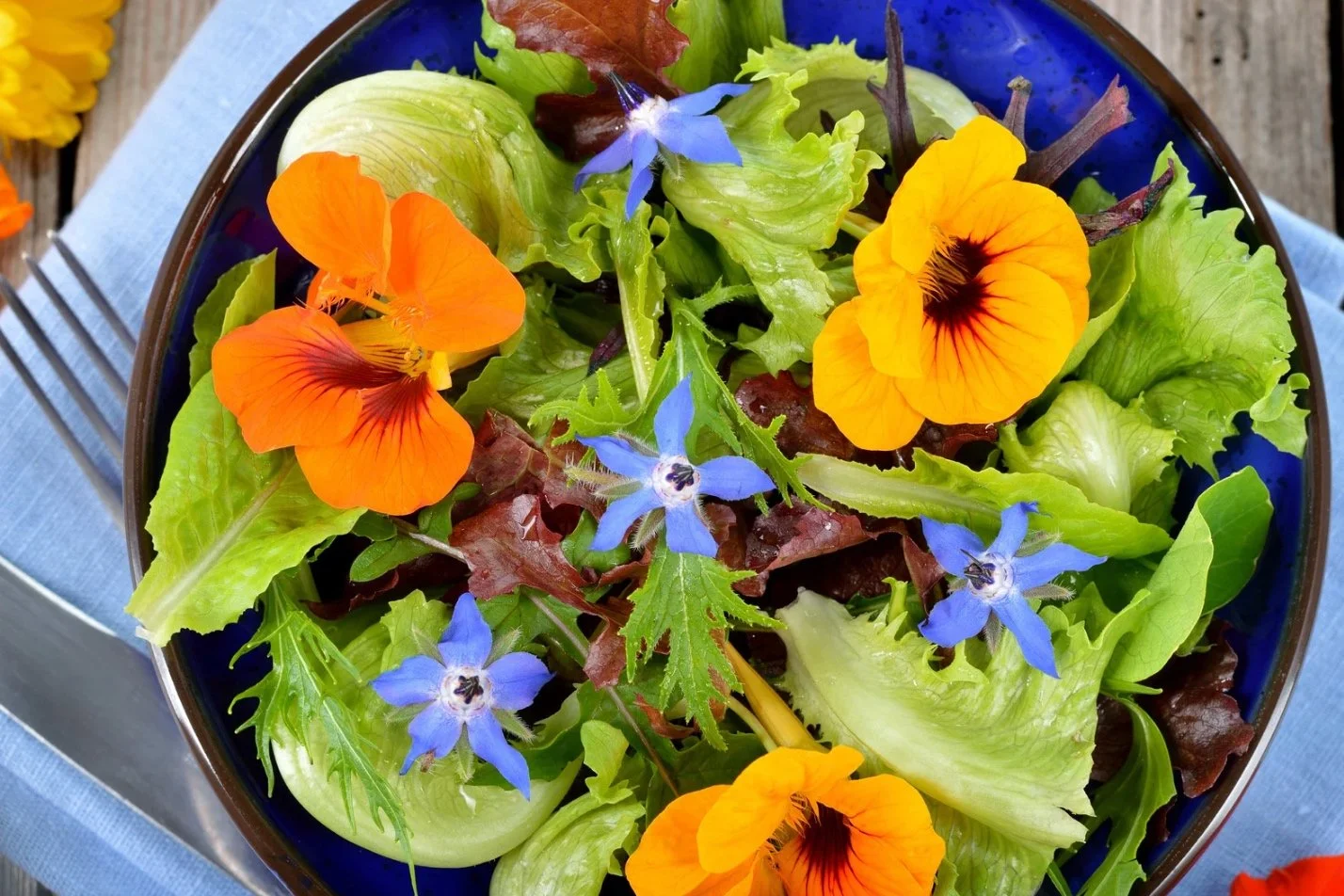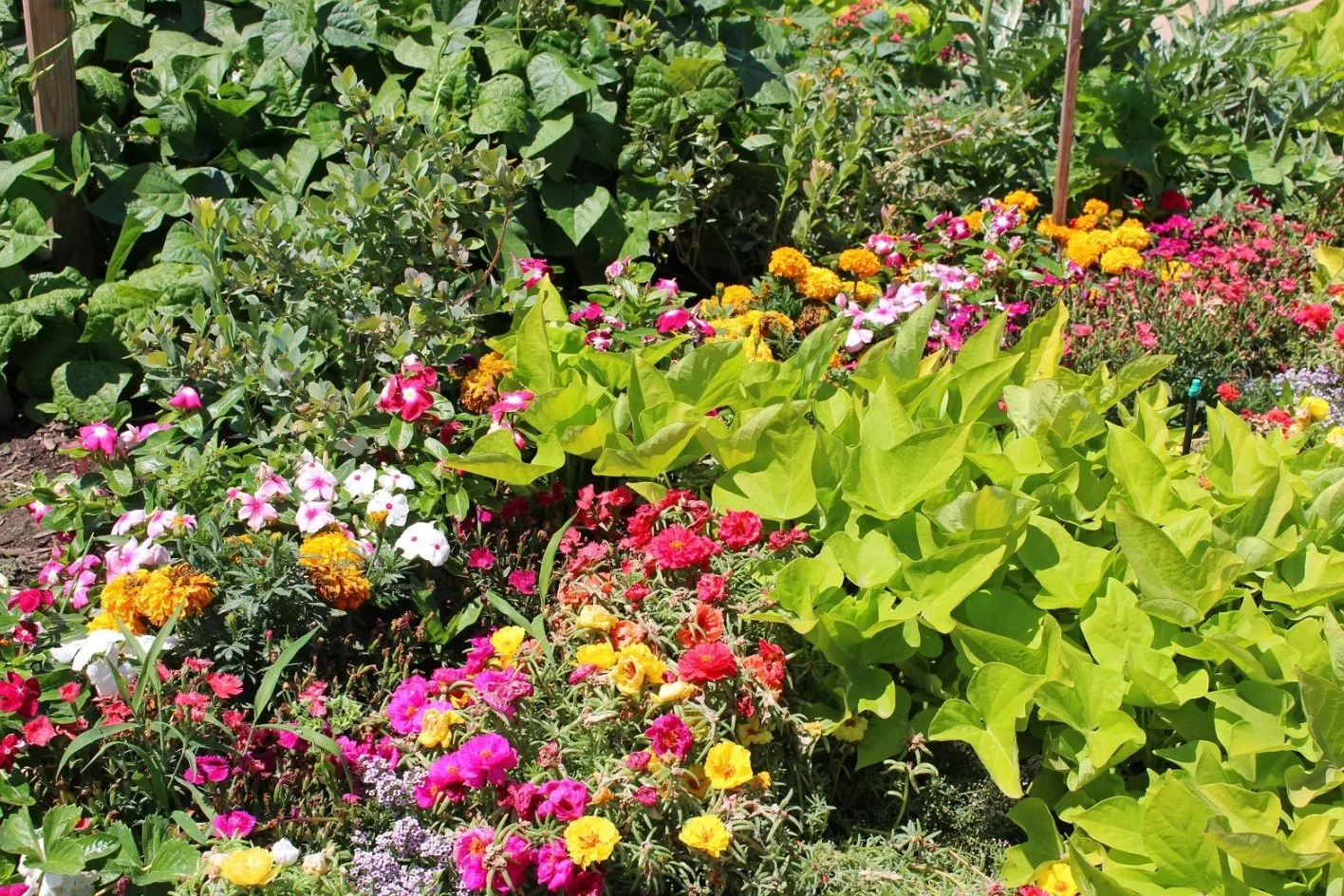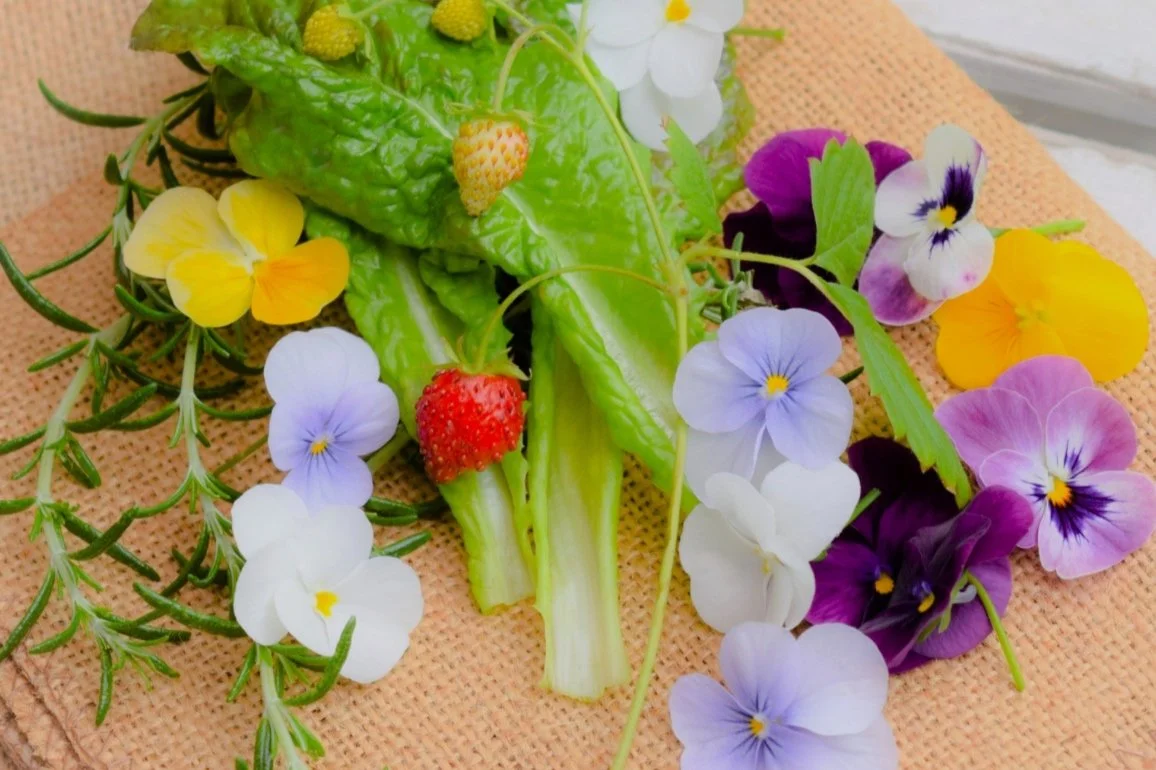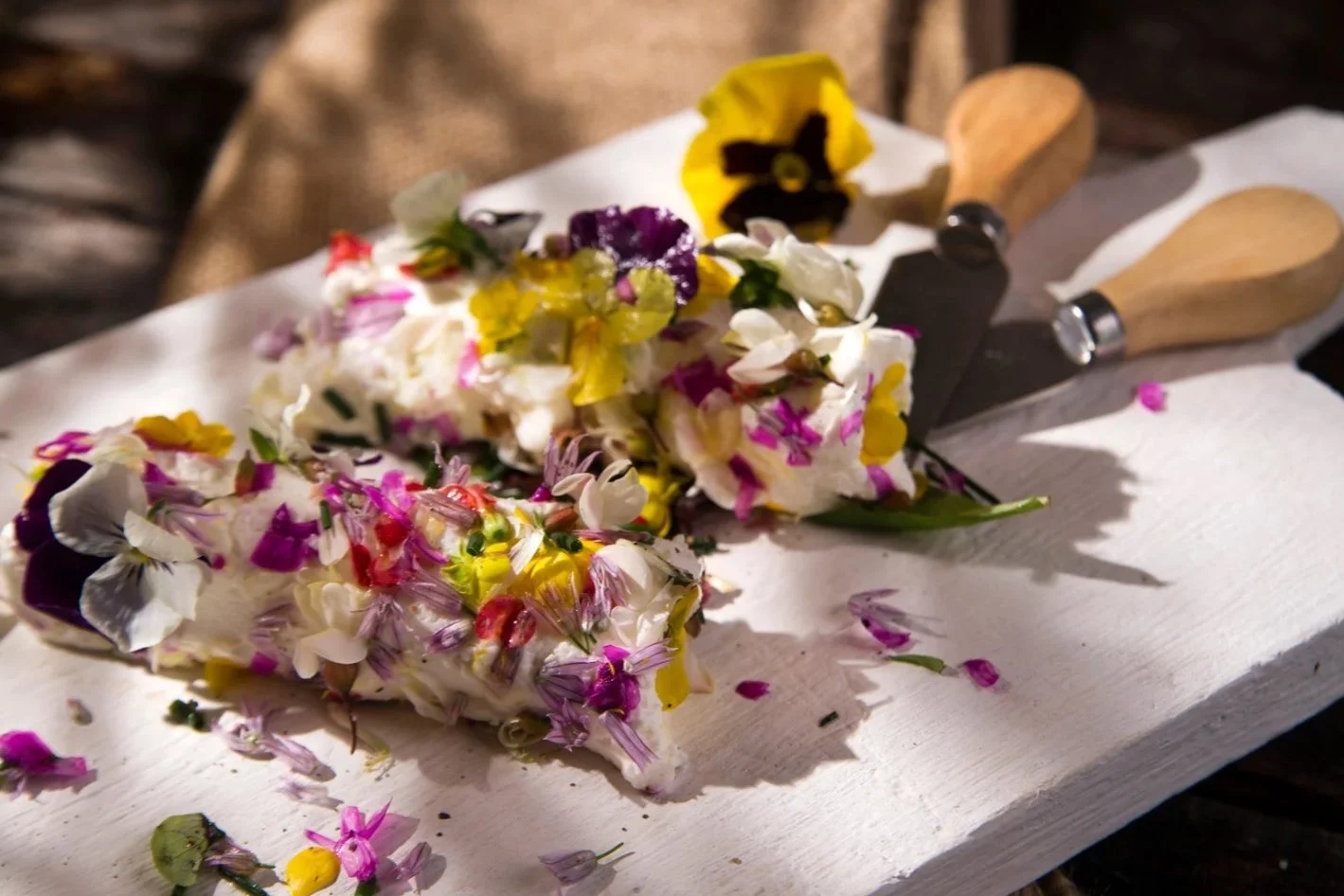The Healing Beauty of Edible Flowers
There’s something deeply magical about stepping into your garden early in the morning and seeing bright marigolds, blue borage or beautiful nasturtiums stretching toward the sun. It’s like Mother Nature is giving you a gentle wink and a morning hug.
But beyond their undeniable charm, edible flowers offer a surprising wealth of health benefits — and yes, they can help you along your wellness journey and reset your body from the inside out. Especially if you’re dealing with pesky, continuous health issues like chronic inflammation.
Flowers: Your Emotional Support Squad
Let’s start with the emotional side (because honestly, who doesn’t need a mental boost these days?). Studies show that gardening can significantly reduce stress and anxiety. One study published in the Journal of Health Psychology found that gardening can lower levels of cortisol (that pesky stress hormone) and improve mood more effectively than other leisure activities.
Now add edible flowers to the mix. The vibrant colors and delicate shapes just make you smile, and harvesting them connects you deeply to your food — an act of mindfulness that encourages you to slow down and savor life’s little pleasures. Watching your garden unfold in the sun reminds us that beauty and healing often come from the simplest places.
Eating Flowers: Beyond Pretty Plates
But here’s the thing - edible flowers aren’t just for show. Many are loaded with bioactive compounds that help soothe the internal stressors of the body - like inflammation - at a cellular level. For instance, calendula contains flavonoids and linoleic acid, which have been shown to help modulate inflammatory responses.
And hibiscus? These babies are packed with anthocyanins and other antioxidants that lower inflammatory markers and support heart health. And what about lavender? Its essential oils and polyphenols can help reduce oxidative stress and calm the nervous system, helping to support lower inflammation levels.
When you add some edible flowers to your diet - like in a salad, tea or infused vinegar - you’re not just adding pretty colors — you’re inviting some gentle healing into your daily life.
Gardening is Movement
And let’s not forget the physical activity that gardening offers. Weeding, planting and harvesting can improve mobility and flexibility - which is particularly helpful for those of us with achy joints or stiffness. Research highlights gardening as a low-impact form of exercise that can reduce chronic inflammation risk factors by promoting overall physical activity. And did you know that My Fitness Pal counts gardening as exercise? Who knew!
Plus, there’s no gym membership required. LOL
Reconnecting with Nature (and Yourself)
Growing edible flowers is an act of self-nourishment, both literally and spiritually. Instead of outsourcing your meals to pre-packaged salad bags or wilted herbs from the store, you become the creator of your own health garden. This hands-on connection fosters a sense of empowerment, something many of us crave when trying to resolve ongoing health issues like chronic inflammation.
When you know exactly where your food comes from (hint: your backyard), you’re more likely to make mindful, health-focused choices.
How Can You Start
Start small. Grow a few pots of nasturtiums or calendula on your patio or balcony. Add in some lavender or borage if you’re feeling adventurous. Experiment with adding petals to a salad, tossing them into iced tea, or using them as a garnish on goat cheese.
Each petal is a tiny act of self-love, a commitment to beauty and wellness rolled into one. And if someone asks why you’re eating flowers? You can proudly tell them you’re fighting inflammation, reconnecting with nature and turning your meals into art — one bloom at a time.
In a world where we're often told to battle aging, fight inflammation and push through fatigue, edible flowers offer a softer, more nurturing approach. So go ahead — let your garden be your pharmacy, your therapy room and your art studio. Embrace the beauty of edible flowers, and watch how they help you bloom too.

